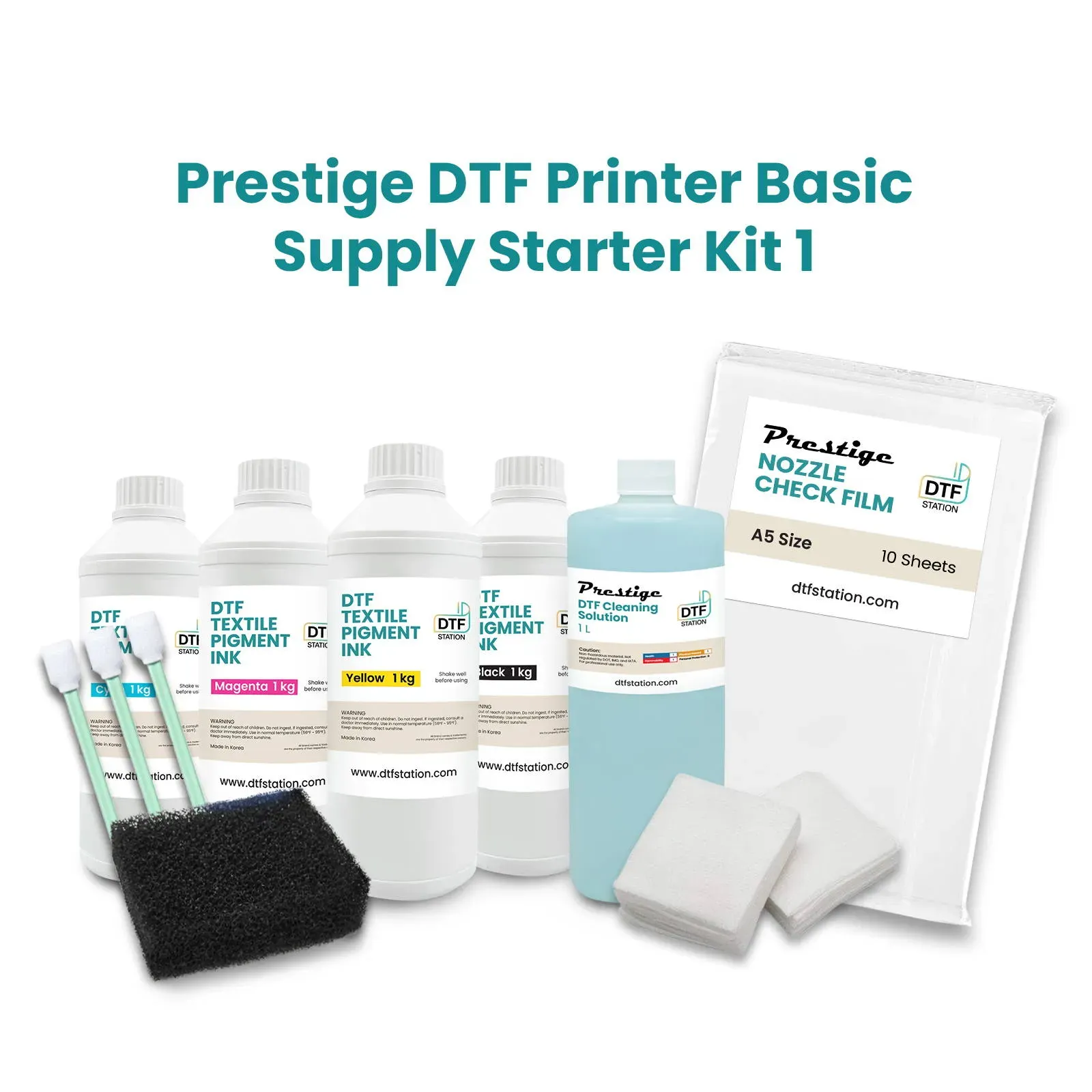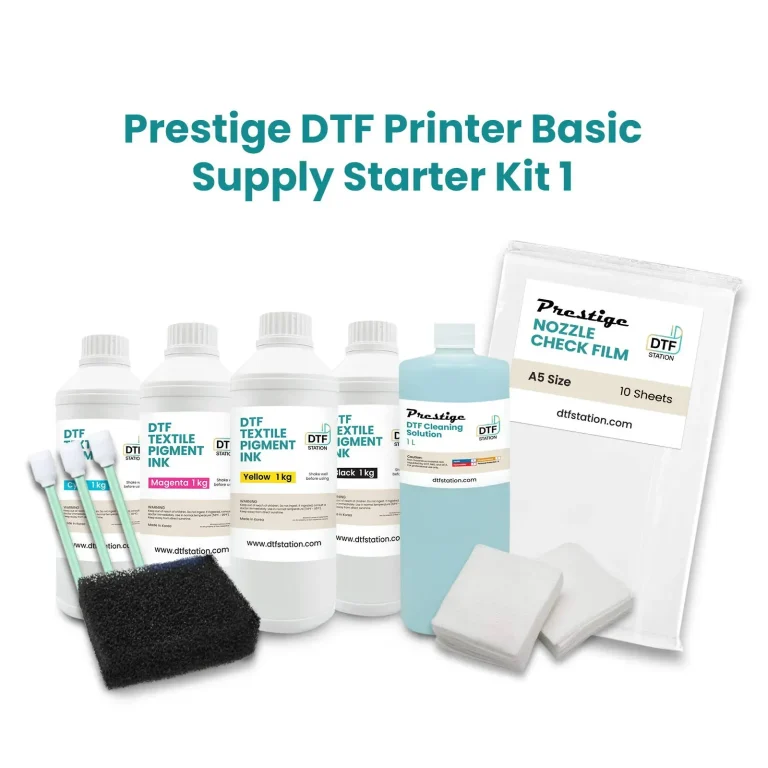When embarking on a Direct to Film (DTF) printing journey, having the right DTF supplies at your disposal is paramount to realizing your creative ambitions. This innovative printing method has gained traction among artists and printmakers alike, thanks to its versatility and ability to produce striking designs. Understanding the essential DTF printing materials, including DTF transfer films, adhesive powder, and ink, can significantly impact the quality of your finished products. In this guide, we’ll delve into how to choose DTF supplies that complement your artistic process, ensuring that each component works harmoniously for brilliant results. Whether you’re a seasoned professional or a curious beginner, mastering the compatibility of your DTF printer with these materials is crucial for achieving vibrant and durable prints.
In the realm of fabric printing, Direct to Film (DTF) supplies encompass a variety of crucial materials that artists need to consider. These components not only enhance the visual appeal of your prints but also ensure the longevity and performance of your designs on different textiles. From understanding the importance of quality transfer films to selecting the right adhesive powders, mastering these printing essentials is vital for successful results. Moreover, evaluating how well your printer integrates with DTF technologies can make a significant difference in the print quality. For anyone looking to explore the capabilities of modern fabric printing methods, familiarity with key DTF printing elements is indispensable.
Understanding DTF Transfer Films
When embarking on your DTF printing journey, understanding the importance of transfer films is essential. DTF transfer films are pivotal as they directly influence the quality and vibrancy of your printed designs. Each film is manufactured with varying properties; therefore, selecting a high-quality film can significantly enhance your final product. Look for options that boast heat resistance and durability to ensure your prints withstand the rigors of washing and everyday use.
Additionally, the film’s ability to retain clarity and colors post-application is paramount. Selecting films that are designed for optimal adhesion with DTF inks will further enhance your print quality. Always ensure that the transfer films you choose work seamlessly with both your chosen inks and fabrics, providing a strong platform for your creativity to take flight.
Choosing the Right Inks for DTF Printing
The selection of inks is one of the most critical decisions in DTF printing. To achieve the best results, you should opt for water-based inks specifically formulated for DTF applications. These inks are known for their vibrant colors and strong adhesion properties. A good rule of thumb is to choose inks that not only produce vivid imagery but also bond effectively with the transfer films and the substrate used.
It’s essential to consider the vibrancy of your inks as this will greatly affect the final appearance of your products. DTF inks with superior adhesion qualities will ensure your designs remain intact, even after multiple washes. Remember that investing in high-quality inks can lead to breathtaking prints that truly embody your artistic vision.
The Role of DTF Adhesive Powder
DTF adhesive powder plays a crucial role in ensuring that your designs adhere effectively to your chosen substrate. High-quality adhesive powders can help provide a strong and lasting bond, which is essential for the longevity of your printed designs. When selecting adhesive powder, look for formulations that disperse evenly during the application process, as this can impact the final outcome.
Moreover, effective adhesive powder should not interfere with the print quality. Instead, it should complement the DTF process by ensuring a smooth, vibrant finish on your fabrics. Testing various powders can assist in determining which best suits your materials, ultimately elevating your DTF printing projects.
Ensuring Printer Compatibility with DTF Supplies
Before committing to any DTF supplies, ensuring that your printer is compatible with DTF technology is crucial. While many standard inkjet printers can be modified for DTF printing, it’s important to confirm that your particular model supports DTF inks without complications. Assessing the manufacturer’s recommendations can provide clarity on how well your equipment can handle this process.
Additionally, some printers may require specific upgrades to achieve optimal printing results. Consider whether you need to invest in special ink systems or modifications to your printhead to work effectively with DTF materials. By taking the time to ensure printer compatibility, you lay the groundwork for a smooth and successful DTF printing experience.
Finding Reliable DTF Suppliers
Working with reliable DTF suppliers is vital for a smooth printing experience. It’s essential to conduct thorough research to identify companies that specialize in DTF supplies. Investigate customer reviews and testimonials to gauge the reliability and quality of the products offered. A reputable supplier will provide consistent quality and a good range of DTF materials.
Furthermore, evaluate the level of customer support offered by suppliers. Having access to knowledgeable support can be invaluable when facing questions or troubleshooting issues with your DTF supplies. Ultimately, choosing a trustworthy supplier can significantly ease your DTF printing journey, ensuring you have the materials and support you need.
Cost Considerations in Choosing DTF Supplies
When it comes to DTF supplies, cost is always a factor to consider. While it may be tempting to opt for the cheapest options available, remember that investing in quality materials can ultimately save you money in the long run. High-quality DTF films, inks, and adhesive powders may require a larger upfront investment, but they often result in superior results and reduced waste.
Creating a budget is essential that aligns with both your financial capabilities and your artistic goals. Weigh the long-term benefits of higher-quality supplies against immediate costs, and you may find that prioritizing excellence leads to a more successful and fulfilling DTF printing experience.
Frequently Asked Questions
How do I choose the best DTF supplies for my printing projects?
Choosing the best DTF supplies involves considering the quality of DTF transfer films, the type of inks, and the compatibility of adhesive powder with your materials. Look for high-quality films that offer durability and heat resistance, vibrant water-based inks, and adhesive powder that provides strong adhesion without compromising print quality.
What are the essential DTF printing materials I need to get started?
To get started with DTF printing, you’ll need essential materials like DTF transfer films, compatible DTF inks, adhesive powder, a reliable DTF printer, and a quality heat press. Ensure these components work well together to achieve optimal printing results.
How can I ensure my DTF printer is compatible with DTF supplies?
To ensure DTF printer compatibility with DTF supplies, check the manufacturer’s specifications for the printer model. Many standard inkjet printers can be modified for DTF printing, but be certain to verify if specialized inks or modifications are required.
What should I look for when selecting DTF transfer films?
When selecting DTF transfer films, prioritize films that offer excellent heat resistance and durability. High-quality DTF transfer films should maintain their integrity under heat application and retain vibrant colors and clarity after multiple washes.
Why is the quality of DTF adhesive powder important?
The quality of DTF adhesive powder is crucial because it directly impacts the adhesion of your designs to various substrates. High-quality powders allow for even distribution, strong bonds during heat pressing, and ensure that prints withstand washing without degrading.
How can I test the material compatibility for my DTF supplies?
To test material compatibility for your DTF supplies, conduct trials on different fabric types, such as cotton or polyester, to observe how well the DTF ink and films adhere after heat pressing. This will help you determine which combinations yield the best results.
| Key Aspect | Key Points |
|---|---|
| Quality of Films | Look for heat resistance and durability for clearer images and vibrant colors. |
| Inks | Use water-based inks for vibrancy and adhesion quality. |
| Adhesive Powder | Choose high-quality adhesives that disperse evenly and create strong bonds. |
| Printer Compatibility | Verify your printer can handle DTF technology and ink. |
| Heat Press Equipment | Select presses with consistent temperature control and adjustable pressure. |
| Material Compatibility | Ensure inks and films are compatible with chosen fabrics. |
| Supplier Reliability | Research suppliers for quality materials and good customer support. |
| Cost Considerations | Investing in quality can save money and improve results in the long run. |
Summary
DTF supplies are essential for bringing your artistic vision to life through textile printing. When choosing supplies, prioritize quality in films, inks, adhesive powders, and compatible equipment. This guide emphasizes the importance of selecting reliable suppliers and considering long-term costs versus immediate savings. By investing time and resources into the right DTF supplies, you set the foundation for stunning results in your creative projects.





